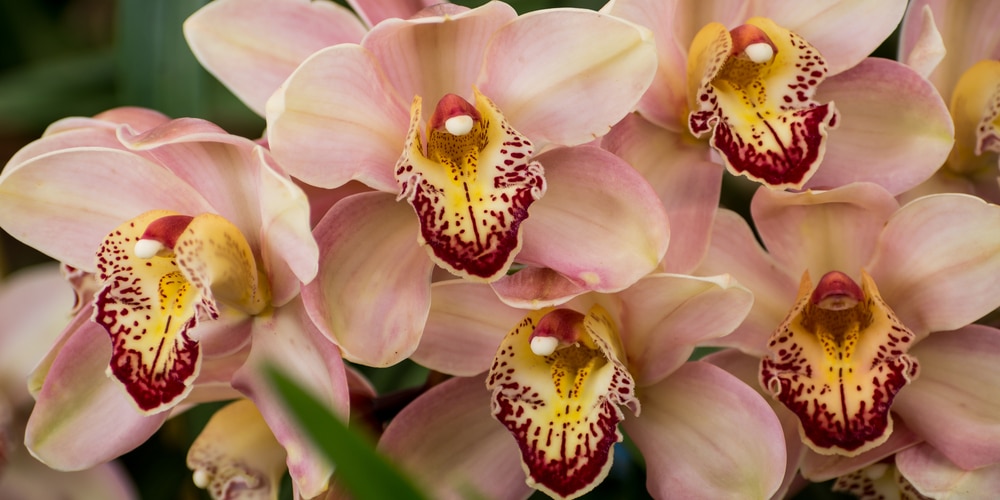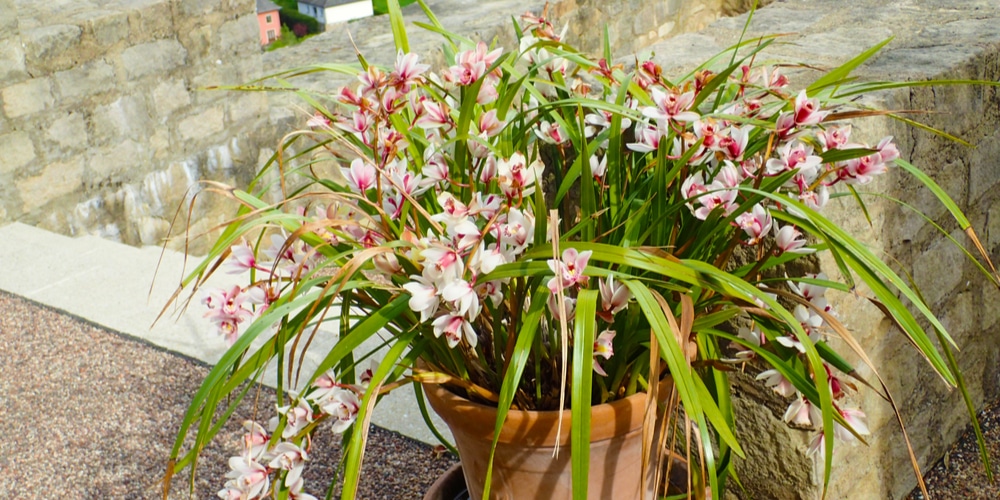Cymbidium Orchids are reed-like plants that grow up to 1 meter tall, which makes them taller than most other types of Cymbidiums. The flowers are large and quite showy, often measuring up to 6 inches in length. They come in many colors, including yellow, brown, red, greenish-yellow, salmon pink, and white.
The beautiful Cymbidium can be found natively growing on rocks in Japan and China. Cymbidium Orchids require very little attention while inside but should be kept moist at all times while blooming or outside it will wilt slightly. Let’s look at how to grow and care for a Cymbidium Orchid.
What is a Cymbidium Orchid?
The Cymbidium Orchid is an easy to care for orchid that produces showy flowers with six petals. It’s famous for its strong flower stems perfect for cutting and can be found in many different colors ranging from white, yellow, orange, green to brown.
In the wild, Cymbidium Orchids can grow as an epiphyte on rocks and trees. You can grow them as a house plant using sphagnum moss for support.
Cymbidium Orchid Growth and Care
Cymbidium Orchids flower from the fall until spring and if well cared for, the blooms are long lasting. Here are some tips to help you grow a beautiful Cymbidium Orchid plant:
Soil
An outside Cymbidium Orchid should be planted in rich, loose soil that drains well. Depending on the climate, these plants can be grown in a flower bed, pot, or hanging basket. They can thrive outdoors in USDA zones 9 to 12.
Ensure that you add plenty of sand and gravel into the soil mix while planting so that water can drain out through it without building up too much around the roots. You can also add some moss and perlite to the soil.
Cymbidium Orchid Growth and Care: Sunlight
They need a full sun position and plenty of ventilation to ensure that it doesn’t sit in too much moisture. This will not only cause rotting but also lead to pests such as orchid snails, scale insects, and fungal diseases. Although these orchids like bright sun, they should be shaded from the summer sun, especially during the hottest part of the day.
How to Grow a Cymbidium Orchid Indoors
Indoor Cymbidium Orchids can be placed anywhere but not in direct sunlight for prolonged periods. The temperature should be kept between 46-50°F during the day and shouldn’t go lower than 40F at night. Temperatures below 35° may cause them to go dormant, so if this happens, place it somewhere warm until new leaves sprout.
Humidity
As far as watering goes, misting is the best way to keep the humidity levels up to between 40 and 60% and ensure that it always has enough water. Orchids love high humidity, but if this is not possible, either put them in a bathroom or humid room like the kitchen or laundry area.
Cymbidium Orchid Growth and Care: Problems
The soil should be kept moist but avoid overwatering in winter. This will cause yellowing of the leaves at their base, and the plant may stop flowering.
Watering requirements
A common question is how often to water a Cymbidium Orchid. You can use your finger to test the soil. It’s best to let it dry out a bit between waterings. Also, you should never water an Orchid in the evening as they will stay wet all night, and this can cause root rot and fungus issues.
Fertilization
Cymbidiums are a type of plant that needs to be fed regularly with a low nitrogen fertilizer. Once a month is more than enough for feeding with a half-strength general fertilizer.
Repotting
Cymbidium Orchids that have finished flowering should be left to rest for a few weeks before repotting. You can remove any old or dead leaves and trim the roots lightly before putting it back into a new pot filled with fresh, rich compost. Repot once a year in spring after blooming finishes.
Cymbidium Orchid Growth and Care: Conclusion
Cymbidium Orchids are a favorite plant of many people because of their distinct color and attractive shape. They are easy to grow with minimal effort, which is great if you’re short on time or don’t have any experience caring for different types of plants.
Related article: How much do orchids cost? A guide to buying orchids

